Among the most famous franchises in the world of cinema, one of the most legendary is that of 007, the saga of James Bond. The British secret agent born in 1953 from the pen of Ian Fleming has now been on the crest of the wave for almost 70 years. and from almost 60 to the cinema. The new, highly anticipated 25th chapter, No time to die, will arrive on September 30th. The James Bond saga, among other things, has always rhymed with automobile, giving the cinematic myth of models that have become legendary. To get prepared for the new film of the most famous secret agent in the world, we asked ourselves a simple question: which are the most memorable 007 cars? We have chosen 10, all in their own way imprinted in our memory. Are you ready to know them all? Warning: there will be some truly amazing models.
Sunbeam Alpine, 007’s first car in the cinema, is the small English sports car loved in America
Let’s start with a car that doesn’t immediately come to mind when you think of the James Bond franchise, but it is actually there first, real Bond Car of the franchise films. We are in the early 1960s. The success of the James Bond books written by Ian Fleming was good but not great. The writer will publish 12 books, two of which are posthumous after his death in 1964. The Eon Productions, a British film production company founded by Robert Saltzman and historic producer Albert Cubby Broccoli, however, saw the potential of the James Bond character, perfect to be brought to the screen.
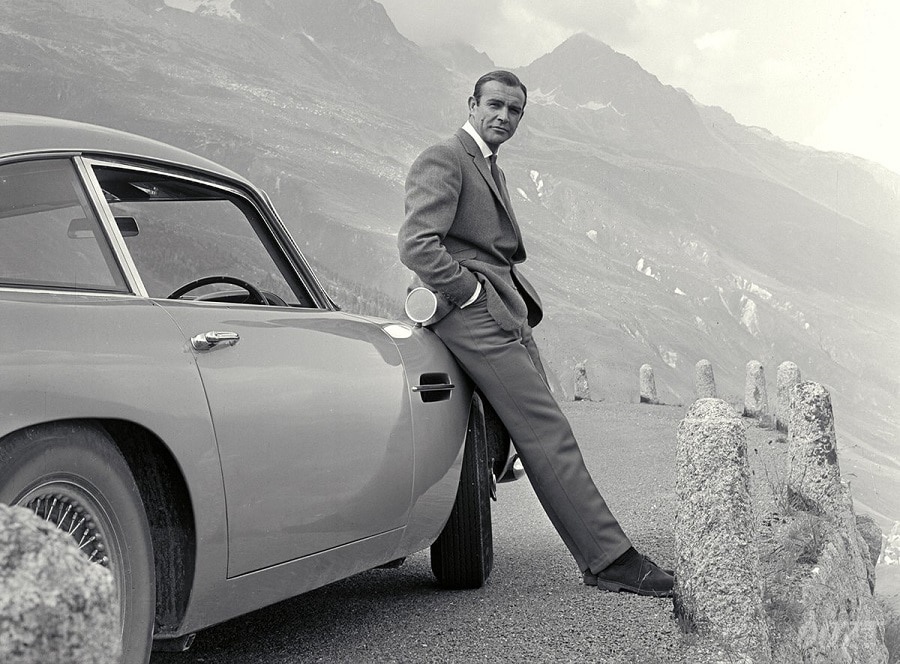
Thus began work on the first, historic Bond film, License to Kill, known internationally as Dr. No. Fans of Fleming’s novels will know that Dr. No is not Bond’s first book, but the sixth. It was chosen because the initially designated book, Thunderball (Operation Thunder), had copyright issues with the book’s co-author, and thus the sixth in the saga was chosen. Set between London and Kingston, the capital of Jamaica, the film was shot with a very limited budget. Even the protagonist was a real gamble. Set aside the possibility of having Bond as the first Cary Grant, who he turned down because he was too old to accept the role in a multi-chapter saga, Eon chose the young Sean Connery, at the time semi-unknown.

Despite the very limited funds, however, Connery’s and Ursula Andress’s performances were flawless, and the film was an immediate success. The most famous traits of the Bond films were already present: the initial gunbarrell sequence, the refined and curated opening credits and an important car care. In fact, Bond could not drive any car: in fact, in Fleming’s books he was portrayed as “a fan of beautiful cars”. However, the small production could not import who knows what cars into Jamaica. No Bentley 4 ½ liter therefore, the Blower Bentley present in Fleming’s first books: production had to find a solution. Legend has it that in all of Jamaica there was only one sports car, which was then lent to production: one Sunbeam Alpine.
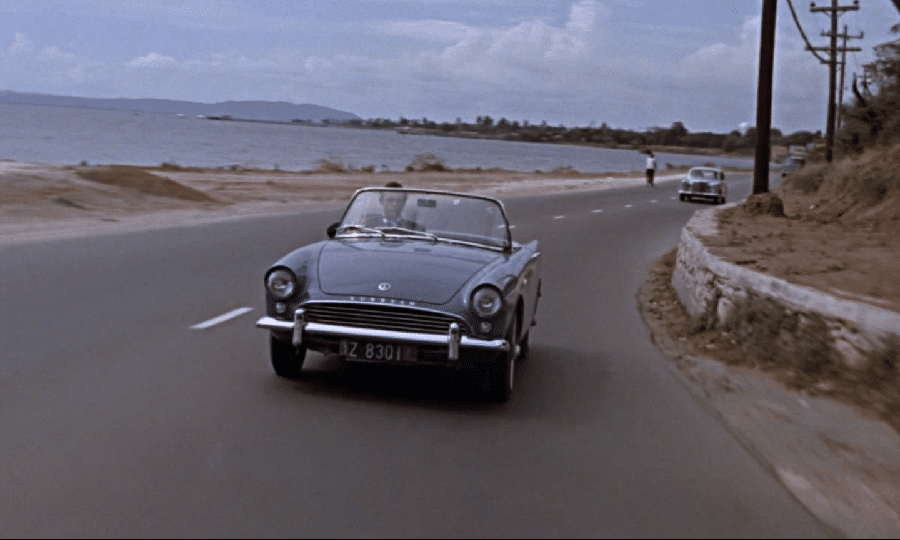
For those unfamiliar with it, it is one small English spider produced by the Rootes Group since 1953. Small, compact and relatively inexpensive, the Alpine combined English size and style with a more relaxed and comfortable, American-style driving approach. Specifically, Bond’s Sunbeam Alpine is one Series II, produced between 1961 and 1963, painted in navy blue. Compared to other Bond Cars, it’s not exactly lightning. It has in fact a 1.6 4-cylinder engine of about 80 HP, capable of going from 0 to 100 km / h in about 14 seconds. Under License to Kill, however, little Alpine was able to save Bond’s life by stepping under the trailer of a truck to escape the assassins charged with killing him. It may not be the most memorable Bond Car, but the Sunbeam Alpine goes down in history as 007’s first car.
Toyota 2000GT, the first Japanese Supercar becomes a legend. And it also becomes a convertible due to problems … of height
We come to today’s second car, to talk about one of the most particular Bond Cars in the history of the saga. If in From Russia with Love cars do not play a great role, and in Goldfinger and Thunderball the legendary Aston Martin DB5 appears, which we will discuss in detail shortly, in the fifth film of the franchise, You Only Live Twice, the automotive scene is very special.

This 1967 film was in fact mostly filmed in Japan, where Bond will go to investigate together with the Japanese Secret Service on a mysterious loss of two space capsules, one American and one Soviet. It turns out that Ernst Stavro Blofeld, the evil leader of the SPECTER criminal organization, stole them. By this time, the Bond saga was now known and loved around the world, and the character of Sean Connery was consigned to the film legend. So, by now, the practice was well established: thrilling chases, beautiful and capable Bond Girls, and dream sports cars.
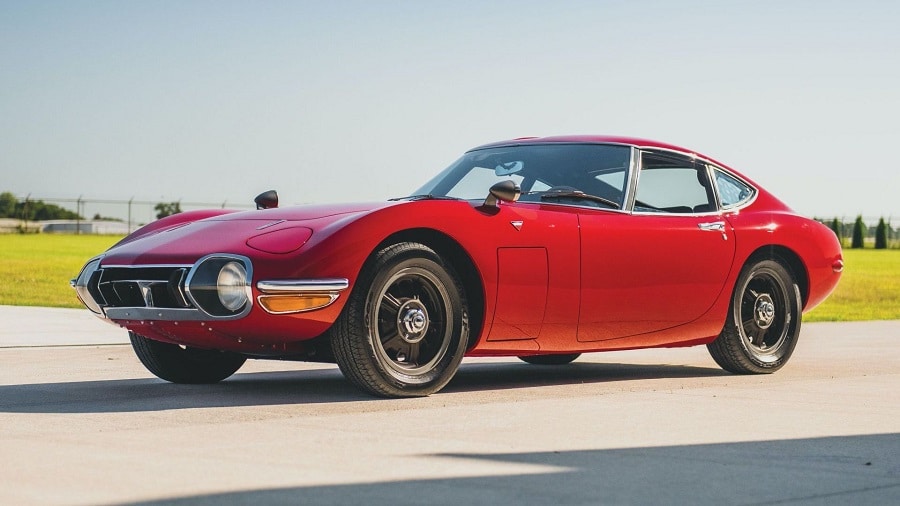
However, since Bond was staying in Japan, the Bond Girl in the film, Japanese intelligence agent Aki, made her car available to 007, obviously Japanese. In those years, the Japanese auto industry was about to blossom, but it was very different from today. The giants like Toyota, Nissan, Honda or Mazda were still small realities, and it was Toyota to provide the cars for the film. Together with the Toyota Crown, the representative sedan used by the bad guys, the real star was the first Supercar of the Rising Sun, the marvelous Toyota 2000GT. The 2000GT was the first Japanese sports car, the first built not to satisfy a need but to demonstrate the company’s capabilities, and to deliver a fast, fun and exciting car.
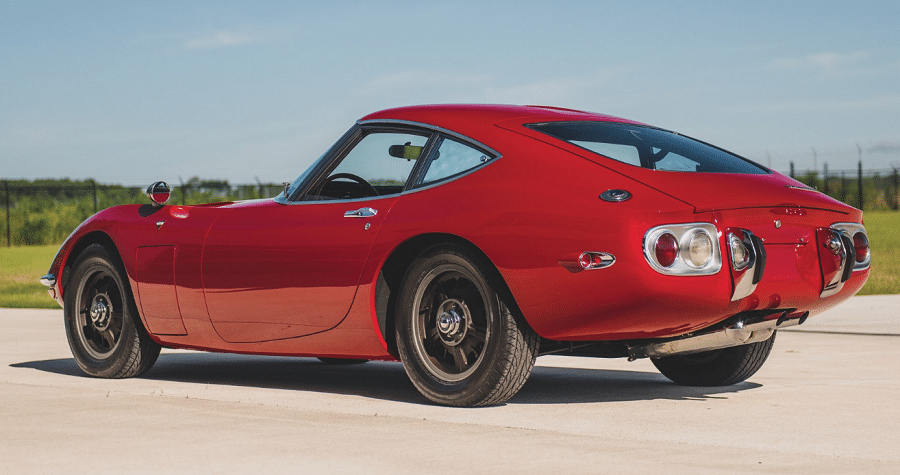
Built, designed and designed by Toyota in collaboration with Yamaha, the 2000GT sported a small 2.0 six-cylinder in-line taken from the Crown but revised by Yamaha. Equipped with double camshafts and three double-barrel carburettors, it delivered well 150 CV, and it was a concentrate of technology. It sported a 5-speed gearbox, aluminum bodywork, four-wheel disc brakes, four-wheel independent suspension and mechanical self-locking differential. Launched in 1965 for the Japanese market only, the 200GT was produced in only 337 examples, but as a 007 car it had a huge problem.
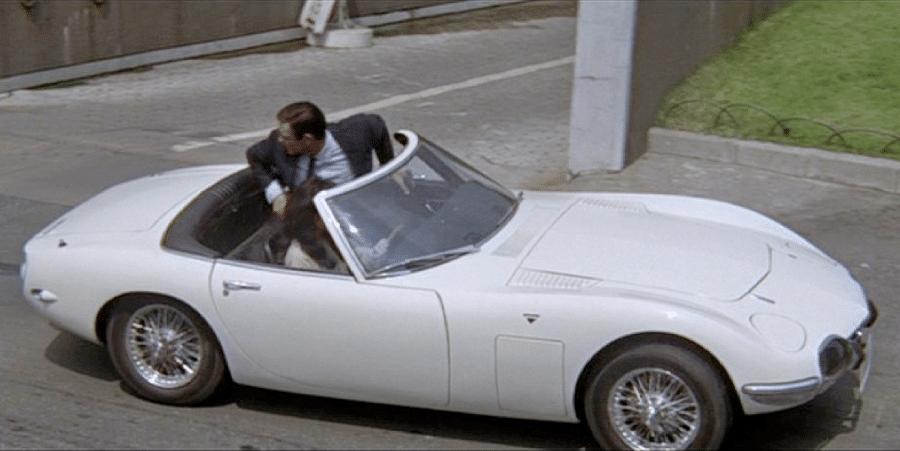
In fact, its dimensions were really small, and the very tall Sean Connery, a man of almost 1.90 m in height, could not get into the car. Toyota thus made it for production only two examples of 2000GT Roadster, exclusively for the film. In this way, the scenes inside the car were even more iconic, and the 2000GT entered the car history of 007.
AMC Hornet, the most famous stunt involving a “small” American compact
From a masterpiece of Japanese motoring we move on to an American car that did not have the success hoped for in terms of sales, but which with its presence together with James Bond will almost become a legend. We are in fact talking about the AMC Hornet. The Hornet was a rather interesting car. The American Motor Corporation, AMC, owner of the Jeep brand until the end of the 1980s, wanted to launch a ‘compact car, smaller and cheaper than classic American sedans over 5 meters long. The basic concept, however, remained the same: traction was rear, and the engines started from a 3.3 six-cylinder in-line up to the biggest ones 5.0 and 5.9 V8. In the face of the compact!
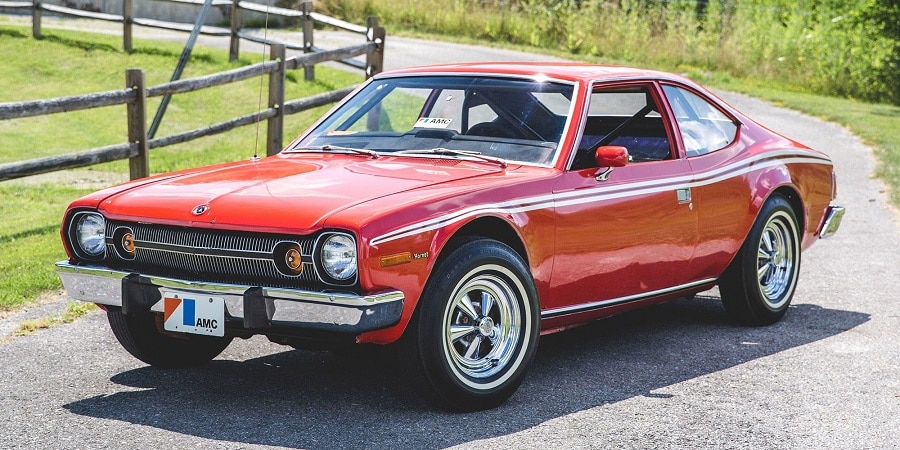
The Hornet, however, was one of the first two volumes, or Hatchbach, produced in America, and after its launch in 1969 the House wanted to give it even more visibility. The goal was to demonstrate how good such a car was also for sporty driving, not just as an economy car. And in fact it was designed for her the most incredible stunt ever seen in a James Bond movie, e in generaland in cinematic history up to that point. We are in the 1974 film, The Man with the Golden Gun, the second with Roger Moore as Secret Agent 007. In the scene, Bond steals a Hornet X Hatchback from a dealer AMC of Bangkok, Thailand, with Sheriff JW Pepper inside, intent on taking a test drive.

Bond thus takes the car from the dealer, and while chasing the bad guys on duty he performs in a incredible jump with 360 ° twist from one side of a bridge to the other destroyed to jump a river. Although the editing of the film has incredibly ruined the scene, adding a cartoon sound to accompany the screwing. The 70’s style … To complete the incredible scene, the Hornet was stiffened and equipped with a central driver’s seat and wider tires, and the Cornell Aeronautic Laboratory studied the speed (64.36 km / h) and the angle of the ramp and the distance between the two ramps (15.86 meters).
Shooting the stunt were 6 (or 8, depending on the version) cameras, plus two divers in the river, a winch and two ambulances. The stunt, however, succeeded on the first shot. Although then both the film and the car were not among the most memorable, this stunt delivered the AMC Hornet X to history as one of the most iconic 007 cars. We have inserted it here above, for you to review it better: have fun.
Lotus Esprit, as a submarine, is still today one of the most famous 007 cars
After the little-known Toyota 2000GT and AMC Hornet X, it’s time to talk about one of the most loved and famous 007 cars in the history of cinema, the Lotus Esprit. The story of how a small and sporty Lotus ended up in a Bond movie is a very fascinating one. This is 1975, and there were rumors that Eon was looking for a new Bond Car for the next movie. Intrigued by this opportunity, Lotus head of public relations, Don McLaughlan, decided to drive a prototype of his new car, the Esprit, upholstered in Lotus logos to the Eon office building.
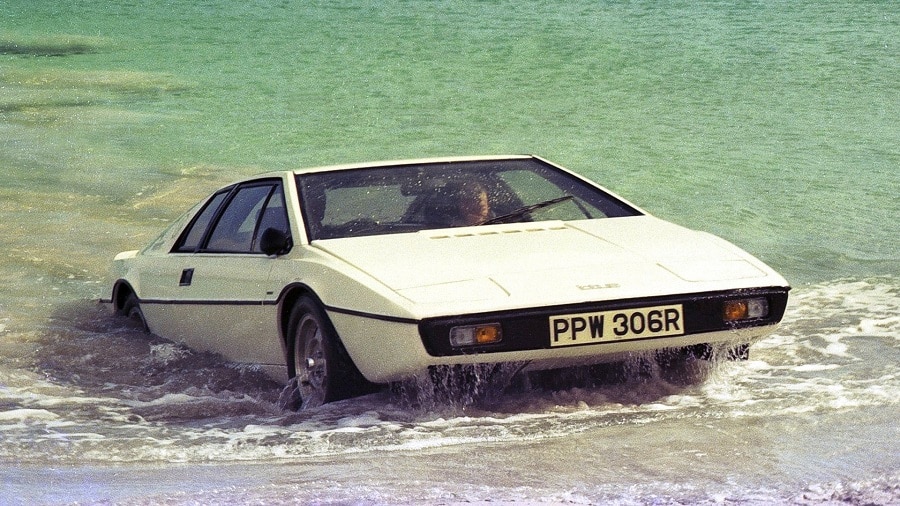
Seeing it, the producers decided to call Lotus to “reserve” two for rehearsal scenes. The car liked it, and was chosen to be there 007’s new car in the 1977 movie The Spy Who Loved Me. The chosen car was one Esprit first white series. The stock version had a 2.0 4 cilindri bialbero, il mitico Twin Cam Lotus, da 157 CV, and thanks to the car’s very low weight, the new Esprit was able to reach 210 km / h. The Bond version, however, passed into the hands of the legendary Section Q, capable of making …







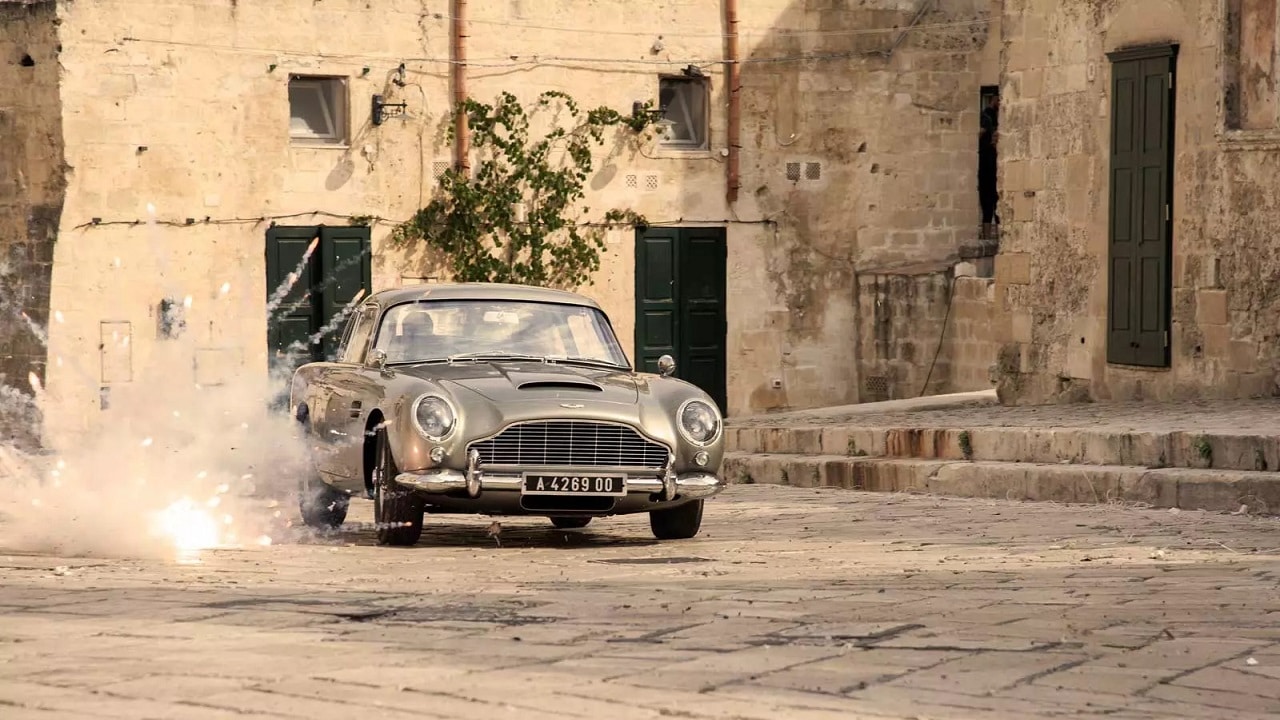








Leave a Reply
View Comments